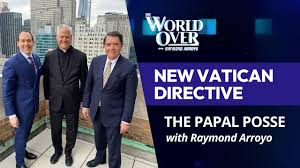In his 2001 song “High Water (For Charley Patton),” Bob Dylan wrote:
Well, George Lewis told the Englishman, the Italian and the Jew
“You can’t open your mind, boys
To every conceivable point of view”
The term “diversity,” like equality, justice, or love, has no clear and identifiable meaning outside of the moral tradition (or anti-tradition) in which it is spoken. For this reason, whenever the term is used to advance a set of policies at an academic institution, one’s understanding of it cannot be isolated from what its advocates believe is good, true, and beautiful. There is no such thing as “diversity” in the abstract. Nevertheless, its champions often use language that seems to raise more questions than it answers.
Take, for example, portions of the definition of diversity offered by Queensborough Community College in New York: “The concept of diversity encompasses acceptance and respect. It means understanding that each individual is unique, and recognizing our individual differences. These can be along the dimensions of race, ethnicity, gender, sexual orientation, socio-economic status, age, physical abilities, religious beliefs, political beliefs, or other ideologies. . . .Finally, we acknowledge that categories of difference are not always fixed but also can be fluid, we respect individual rights to self-identification, and we recognize that no one culture is intrinsically superior to another.”
This definition is not much different than what one finds on the websites of thousands of academic institutions throughout North America. On a superficial reading, these statements are often commendable. For they ask us to make the effort to understand and respect our colleagues and students, and to take their views, commitments, and identities with utmost seriousness. But on a more critical reading – one you would think would be common practice at institutions committed to the pursuit of truth – you become less confident in the coherence of such statements.
Queensborough says that “no culture is intrinsically superior to another,” but that doesn’t seem right on Queensborough’s own account of diversity. After all, a culture that rejected this understanding would surely – in their view – be a culture that is less accepting and respectful than a culture that embraced Queenborough’s definition. But in that case such a culture would be inferior in comparison to those cultures that in fact embraced diversity.
Moreover, it seems perfectly correct to say that some religious beliefs, political beliefs, or ideologies are not entitled to acceptance and respect. For some of them – such as fascism, Stalinism, and extremist versions of Islam – when put into practice are deleterious to human dignity. Even though the advocates of these disreputable views are entitled to respect as persons, it would be a moral affront to suggest that the cultures in which these views flourish are no better or worse than any other culture.
How does something like this happen? How can the leadership of an institution of higher learning make such simple mistakes in reasoning? I think it’s because it uncritically embraces a set of background beliefs that “resolves” apparent incoherencies in the direction of a particular ideology, even though the school does not recognize it as such.
Consider this example. Imagine school B has a diversity statement that encourages the hiring of academic couples by providing financial incentives for its departments to target such couples. Suppose Dr. X – whose wife is a non-academic homemaker who cares for the couple’s four young children – is a finalist for a tenure-track position at B. His chief competitor for the position is Dr. Y, whose wife is an academic in the same discipline. They are a childless couple. Both X and Y are accomplished, though the consensus by the search committee is that X is not only a better fit for B but is slightly superior as a teacher and scholar in comparison to Y. Not surprisingly, however, the committee makes offers to both Y and his wife. The two-for-one incentive not only loomed large in the committee’s decision, it also allowed them to show the administration that they are doing their part in advancing diversity.
But is such a scenario really consistent with the typical call for the school to “respect individual rights to self-identification” and the claim that “no culture is intrinsically superior to another?” For by providing financial incentives for such a hiring, the school sends a clear message: we prefer male professors who are married to female professors, even when we know and that the male professor is not the best candidate for the position to which he applied.
Please don’t misunderstand what I am saying here. I am not saying that a school should never provide financial incentives that would help cast a wider net to include members of groups that are underrepresented in certain disciplines. I have no doubt that there are times and places in which such hiring strategies are called for and can be justified. In fact, I know of several academic couples I would welcome as colleagues at Baylor University, where I serve as a member of the philosophy department.
What I am suggesting is that, when these strategies are implemented, schools ought to be careful about what they communicate about what counts as an appropriate self-identification and whether certain cultural practices are superior or inferior to others.
After all, consider how Mrs. X may view it. Rather than seeing the hiring of the Ys as striking a blow for diversity, she may see it as a significant and unjustified loss for her and her family, which could have been avoided if she had just chosen a different and “more acceptable” career path many years ago. What she sees as robbing Peter’s wife to pay Pauline does not “encompass acceptance and respect.”















